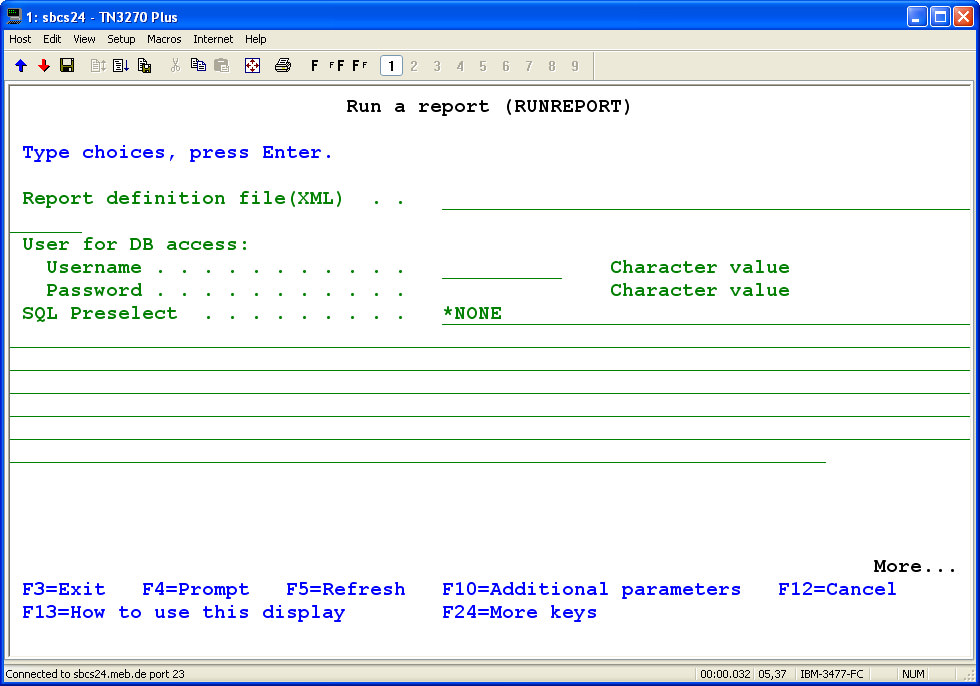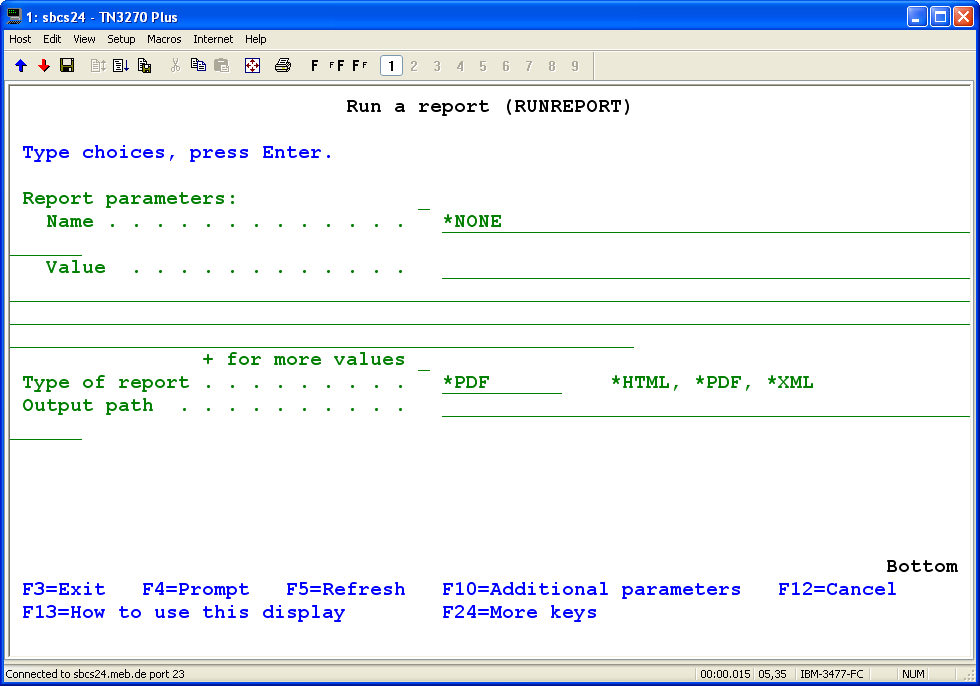The command RUNREPORT
The command RUNREPORT can be used to create a report. An XML report definitions file, in which the details for a report are defined, is accessed for this purpose. The results files can be created as PDF, HTML, or XML.


| Report Definitions File (XML) | Specify an XML file that contains the definitions for creating a new report. This can be an uncompiled.jrxml file or a compiled jasper file. | ||||
| User for DB Access (DBUSER) | Enter the user that has access rights to the database from which the report will be created.This parameter consist of two elements:
| ||||
| SQL Pre-select (SQLPRESLT) | An SQL select statement can be specified here, that is run before report creation and who's results are sent along to the creation process. Every line of the result set will be passed on individually to report creation and a separate report file will be generated for them.Every results column is available during the filling process as a report parameter.The parameter name corresponds to the column name inclosed in % (%COLUMNNAME%). The parameters in this notation can be accessed with in the report.Example:Query type „Select * From MyTable" provides columns "Col1", "Col2" and "Col3".These columns are available in the report as parameter "%Col1%", "%Col2%" and "%Col3%".Please be careful to enter the parameters with the correct name in the report definition. |
Important:
Please assign the correct Java data type to the parameters in the definition. If a results column, e.g. is an SQL Type "Char" the report definition of the Java data type of the corresponding parameter must be "java.lang.String". The wrong data type will result in an error during report creation.
Which SQL type corresponds to which Java type during pre-select, can be found at "http://java.sun.com/j2se/1.5.0/docs/guide/jdbc/getstart/mapping.html" in section "8.9.1 JDBC Types Mapped to Java Types".
| Report Parameters (PARMS) | With Report Parameters it is possible to pass on additional data in the form of a key value to the report creation. These parameters are sent to JasperReports during the filling process. They can be useful, if JasperReports cannot take them from the original data sources.The parameters can be accessed within the report using the following pattern: %PARAMETERNAME%.Example:To access a parameter with the name "MyParam", %MyParam% must be entered in the report. Please note, the parameter values will be passed on to report creation as the data type String. Please store the parameters in the report definitions with the data type "java.lang.String" .If a number is entered as a parameter value, e.g. 123, this must be converted in the report to the Java "Integer" data type, if, for example, calculations will be made with them. | ||||||||||||||||
| Report Type (TYPE) | Enter the format type here for output of the report.Possible Values:
| ||||||||||||||||
| Output Path (OUTPFILE) | Enter the complete name, including path, of the output file here. | ||||||||||||||||
| i-effect Application Server (EFFSERVER) | It is possible, with i-effect, to remotely call up certain tasks from another IBM-Power System in the network. It is also possible to call up this command remotely. The sever on which i-effect, is installed and licensed must be specified in this case. This parameter consists of three elements. | ||||||||||||||||
| DNS Name or IP | Enter the DNS name or the IP address of the i-effect server.
| ||||||||||||||||
| TCP/IP-Port | Enter the port from which the i-effect command will be called up. This port is dependent on the area for TCP/IP ports specified in the default settings of the *BASE module. (Menu item 80).The following settings are possible:
| ||||||||||||||||
| Select the base i-effect TCP/IP port area and add a number that corresponds to the desired command | |||||||||||||||||
| Type of Call | This parameter defines whether the calling server first waits for feedback or is immediately available for further actions.
| ||||||||||||||||
